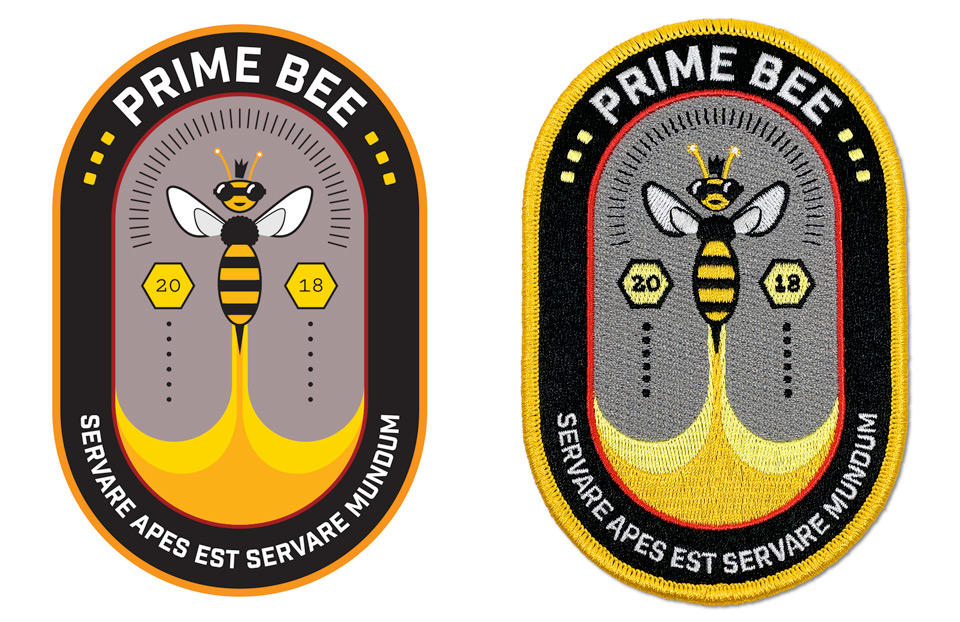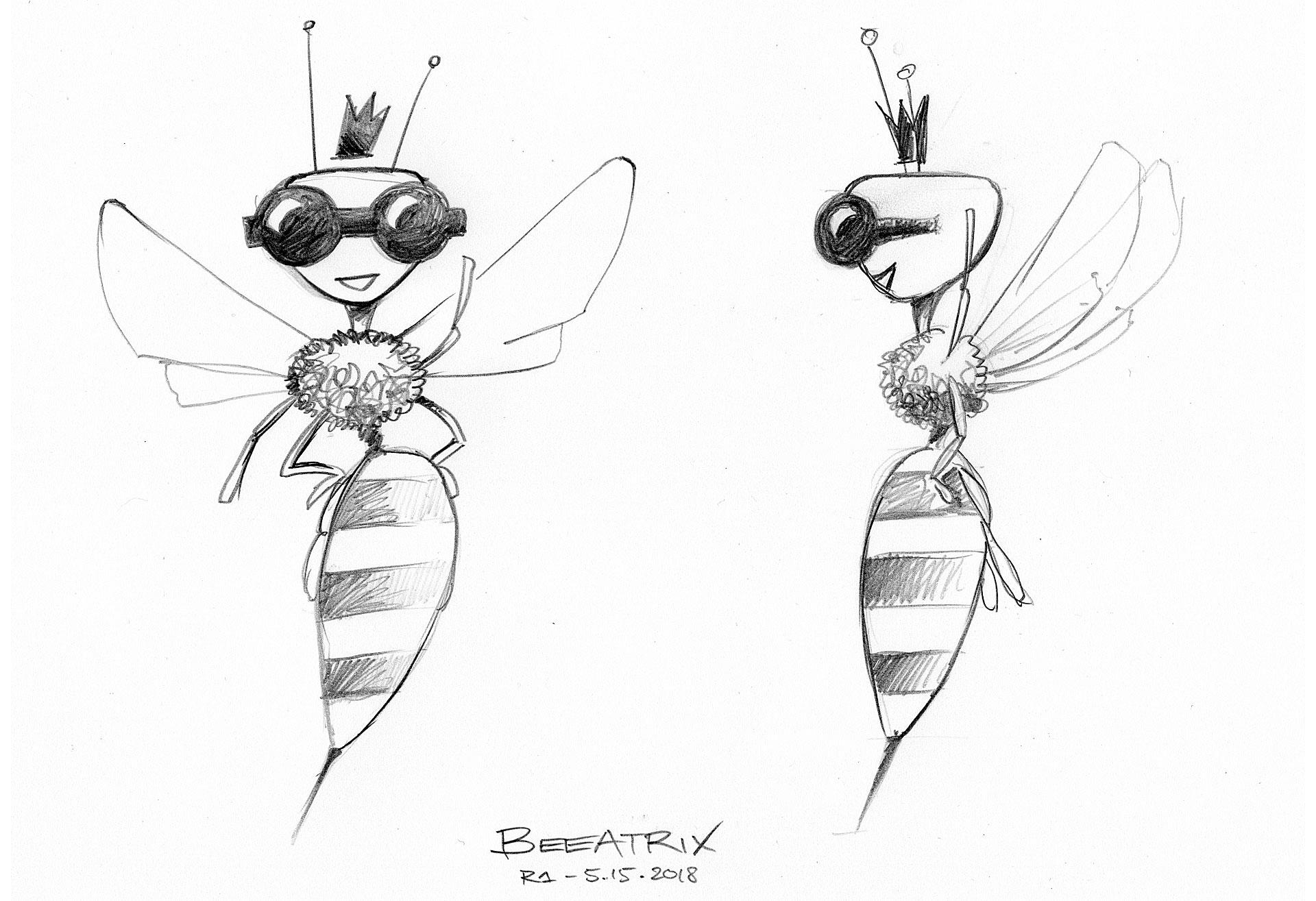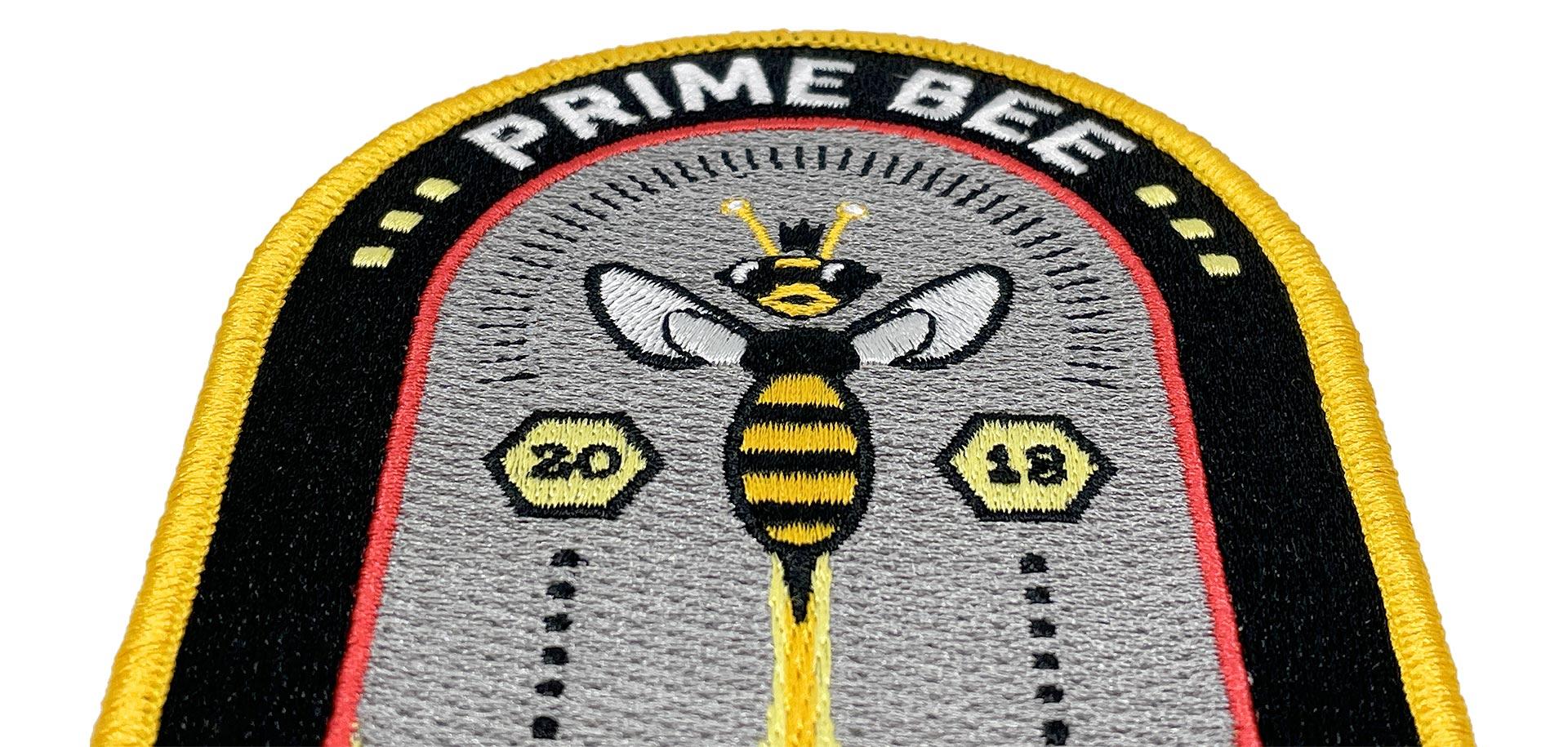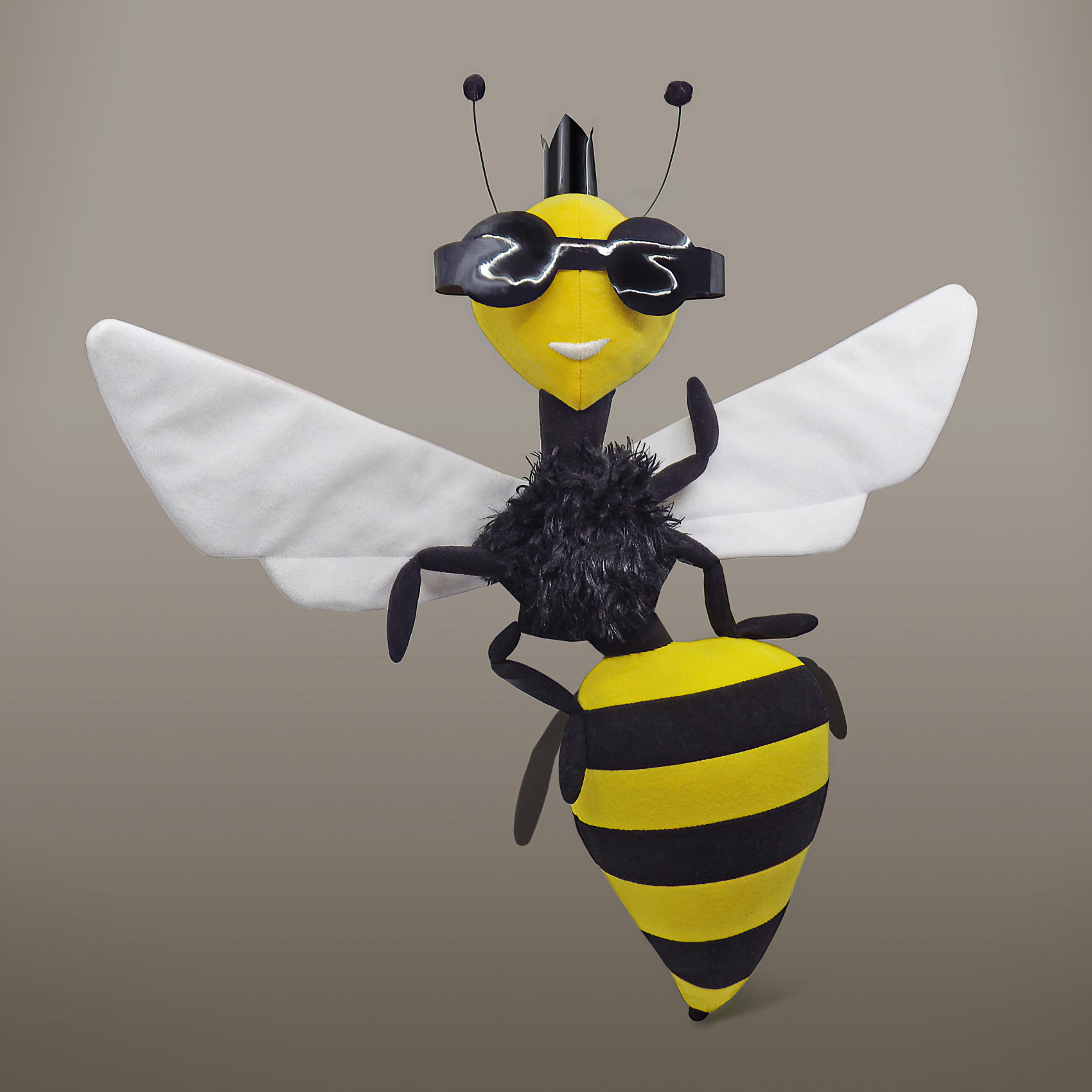PRIME BEE

Scientist and entrepreneur Dr. Annette Kleiser approached me about designing a logo for a company developing a vaccine to protect bees from American Foulbrood (AFB), a highly contagious disease that’s devastating bee colonies all over the world. Once a hive shows clinical symptoms of AFB, the hive, colony, and all related equipment must be destroyed by burning and burying deep in the ground. In addition, hives that were in proximity must be quarantined for multiple weeks. The economic impact to the beekeeper is significant.
Dr. Kleiser sought to partner with scientists and institutions around the world and asked for a logo that could provide a visual anchor for her efforts. I suggested that a logo might best be designed when a team and an organizational structure had stabilized, and that we might instead design a NASA-style mission patch. Happily, Dr Kleiser agreed. Once she explained the workings of the vaccine to me a visual entered my mind almost immediately. (We did develop a proper logo later.)
The Prime Bee vaccine is placed into the sugar feed. Worker bees consume the vaccine with the sugarfeed, which is then digested, and transferred to the glands that produce Royal Jelly. Worker bees feed the Royal Jelly containing the AFB vaccine to the queen bee, who digests the Royal Jelly and stores vaccine particles in her body fat. From there the vaccine is transferred to the ovaries and passed to the developing eggs. The developing larvae (now vaccinated) are resistant to AFB infections as they hatch.
In other words, everything hinges on the queen bee. What better symbol for our mission patch? With this in mind I designed Beeatrix, the Prime Bee queen bee. Beeatrix is a stylish apian on the go sporting a sassy crown and sunglasses that are as much Amilia Earhart aviator goggles as they are Edith Head’s glasses.

The design of the mission patch features Beeatrix soaring into the sky on column of honey, flanked by the year of Prime Bee’s foundation encased in honeycomb hexagons. The patch also has an inspirational motto—”To save the bees is to save the world”—rendered into Latin by my high school Latin teacher, Dr. Konrad Schmidt. Embroidery was handled by my friends at Ellen’s Silkscreening.
Following my learning experience with the patch I designed for Meg Howery’s novel “The Wanderers,” we worked together to make the embroidery come as close to the design as posible. As you can see in the image above, there are always some compromises, but we were all very happy with the result. And embroidery makes for fun detail shots. To wit:

I’ve said it before, I’ll say it again: We design in poetry, but we embroider in prose.
Having created the Saks Fifth Avenue Yeti I do now always look at projects and think, “Well, shouldn’t this also be reborn in plush?” And with Dr. Kleiser’s blessing and the excellent plush prototyping skills of Jen Gubicza of ZooGuu, so it was:
